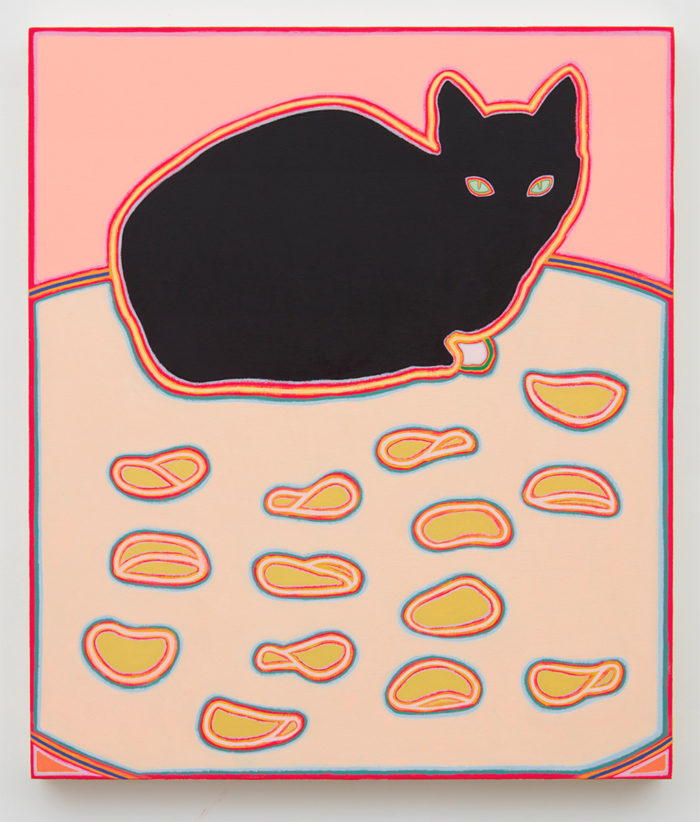
Holly Coulis’s exhibition “Table Studies” at Klaus von Nichtssagend function like tightropes or trick devices. These lines bisecting the canvas, where the horizon would fall in a traditional landscape painting, are sometimes table tops or mirroring surfaces in which objects placed bottom-to-bottom reflect one other. Sometimes they seem to indicate a waterline in which vessels are immersed.
Ms. Coulis’s paintbrush produces other tricks. Although the canvases are composed of layers of flat color, the barely defined subjects — food, domestic animals, teapots and other containers — are outlined with two or three veins of contrasting color that create a glowing effect, like neon tubes. You see this particularly in “Cat and Potato Chips” (2017), in which the different-colored outlines amplify the spooky presence of a black cat and the banal (toxic?) food. In “Hot Dog Sun” (2017), sausage links fanning out from a yellow half-circle serve as rays of light, while elsewhere overlapping forms are colored in disparate hues to suggest transparency, refraction or multiple points of view.
The news release accompanying the show suggests a predictable roster of painterly references: Giorgio Morandi, William Scott and Gary Hume. (I would add William Bailey and Cézanne.) Although Ms. Coulis leans heavily on art history, she breaks with it in interesting ways, stripping the canvas down to near essentials and transforming still life into the intriguing-sounding “Table Studies.” Balancing minimal and dense, electric and subdued, her paintings initially seem conservative, but they start with traditional elements and end up turning the tables on them.